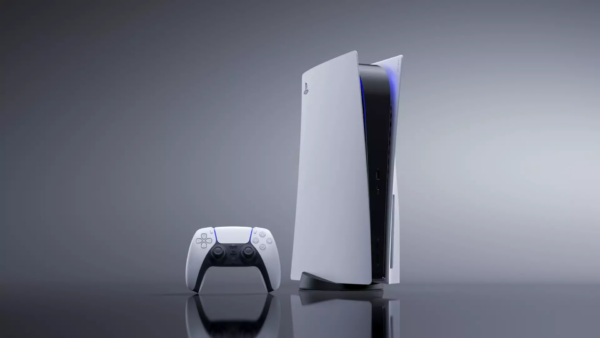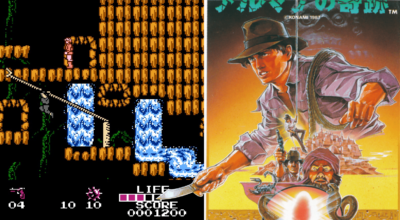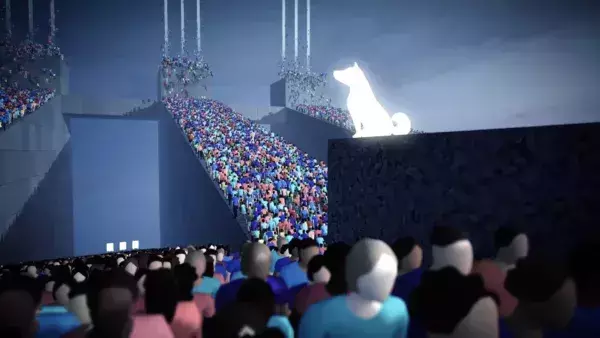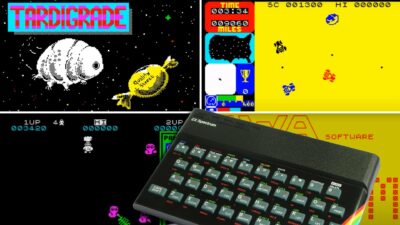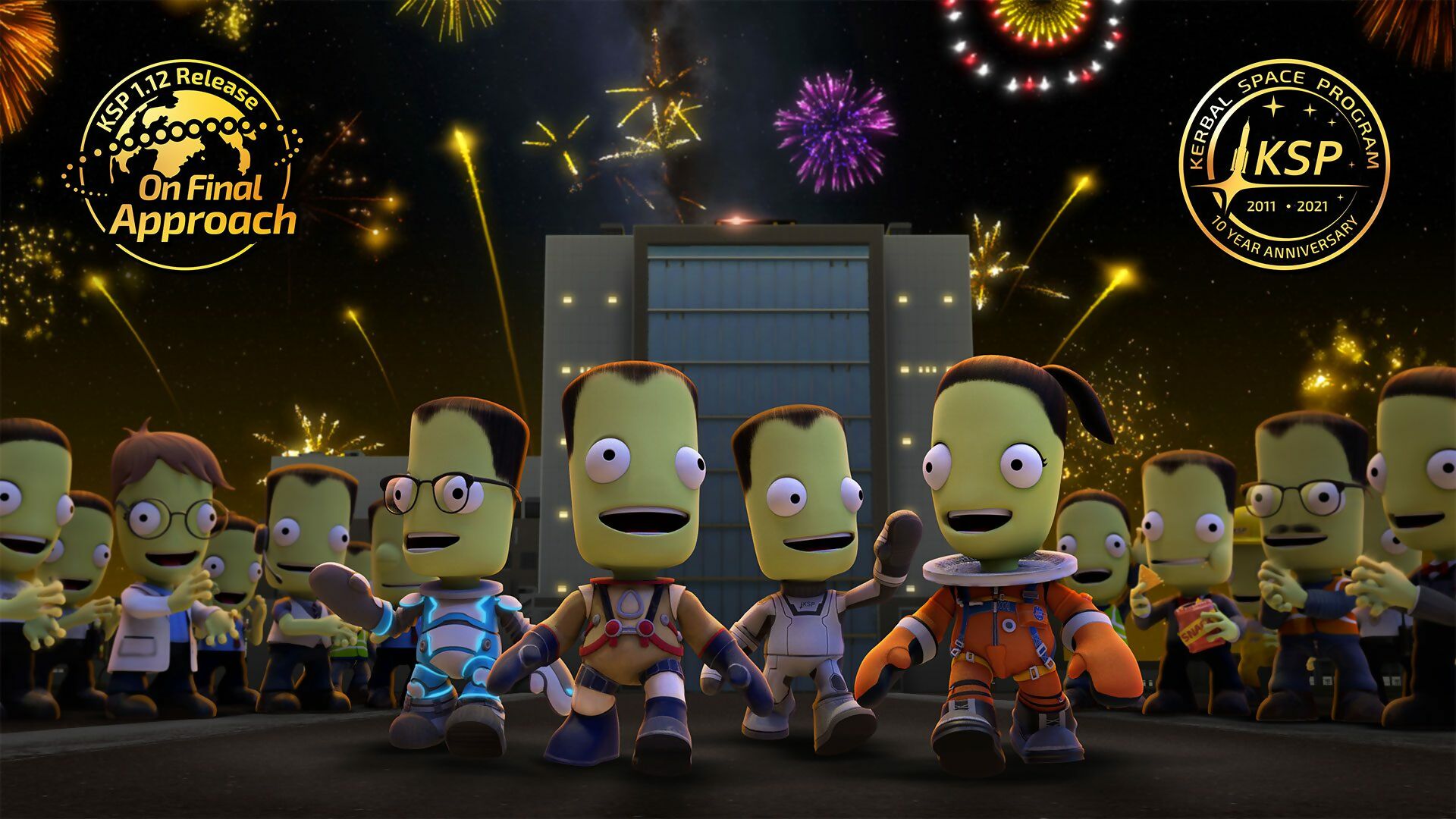
You would absolutely be forgiven for doing a double-take – for thinking what you were reading was the result of some hasty Wikipedia trawling – but it’s true: Kerbal Space Program is ten years old. Felipe Falanghe’s creation was released publicly on 24 June 2011 with Version 0.7.3: one small step for a physics-based rocket-building simulator (with a hell of a lot of character); one giant leap in the amount of time millions of people would go on to spend in front of their computers and consoles trying, trying, trying to make a rocket that didn’t explode horribly. All the more impressive when you consider that Squad, the Mexico-based design team behind the game, wasn’t even in the business of video games when Falanghe pitched the idea.
It’s impossible to pin it down succinctly, the allure of a game that back in 2011 – it’s fair to say – would never have been predicted to sell millions of copies, to be sold to a major publisher (or their indie publishing label, at least) or to receive a big budget/big hype sequel under the banner of said publisher. You see, while Kerbal Space Program might lure a wide range of people in with its cutesy titular Kerbals on the cover, Squad’s game has always been a hardcore simulation at its heart. What you can do has expanded massively over the years, but its core concept still revolves around what it was back on day one: you need to build a rocket, and in doing so, you can do as you please with the tools and equipment provided, as long as it obeys the rigid laws of physics. It’s not exactly Minecraft levels of broad appeal.

A successful launch seems like a basic thing, but it’s a real challenge for first-time players
Never underestimate the appeal of space travel, though: Kerbal’s initial prototype release saw an instant response from players keen to get their rockets as high into the sky as they could without enduring a fiery failure, and an instant response from many of the same players keen to get involved in the project however they could. From around its fourth hire, Squad was bringing in talent from outside its native Mexico, quickly setting its stall out as a collaborative, remote-based development studio welcoming anyone from around the world who had the talent to contribute.
“One of the reasons Squad is a worldwide team,” explains Nestor Gomez, head of production at Squad, “is because since the very beginning, there were people really excited about the project and they wanted to join the team to take it further, from all over the world. So since the [start], it’s been a worldwide team.”

Many players have lost countless hours just trying to construct a rocket, never mind flying (or crashing) it
Naturally, not everybody was looking for work at Squad – there was a game to be managed here, and the successes of Kerbal Space Program only became more pronounced as it saw more development. Newer versions led to more impressive features, which led to more enthusiastic word of mouth, which led to more players – by the game’s v1.0 release in 2015, the game had real hype behind it. It was unexpected at Squad, and threw the decidedly indie team somewhat off its game: “The game started really small, just trying to build a prototype,” Gomez says. “It was released and got a great reaction from the public. From there [we were] just running and running – trying to catch up, juggling with everything, and trying to make it work. Managing the success. Then that curve slowly started to flatten, and we were able to try and think about what we were doing – we could plan more.”
Prepared for launch
Said plans saw the game move from its initial state – a 2D plane, set rocket designs, nothing outside of a flat plane to ‘discover’ – to what we have today: an entire solar system to explore, rockets that can be designed however the player sees fit (not saying they’re guaranteed to work, though), the chance to voyage and discover things outside of the planet Kerbin’s atmosphere. But the core remains: “If you think of the main loop, it’s still the same,” says David Tregoning, co-lead engineer at Squad. “You build a rocket, you try it, you fail – that’s intentional in a way, you fail in a fun way in a lot of cases – then you go back and you try again, and you keep going. That key loop has been the same since Felipe implemented it originally.”

Colony-building is a big part of the sequel; a key element of any interstellar travel plans being that you need forward posts from where to take off
Intense challenge and achievement is a cornerstone of Kerbal Space Program. A dearth of in-game tutorials led KSP to being a sort of Demon’s Souls-alike online, with most conversation about it being ‘How do I do x?’, and most responses pointing to a couple of incredible, fan-made resources. The game was hard by design, but it mixed in an actual thrill in its failure rather than a frustration – something to take you back to the drawing board and try again.
“I think there’s a level of difficulty there that makes the achievements feel that much better,” Tregoning says. “You can’t just get there, you can’t just follow the bouncing ball – you need to do some research, you need to do some work. That said, I’m sure there are people who get turned away and it’s a real hard balance.” Gomez agrees, and posits there might have been a benefit in, well, actually telling players how to do things inside the game proper: “If we were given a second chance to do it all over again, we’d try to do at least some stuff earlier, to make some things a bit easier for some players,” he says. “But at the same time, a part of the fun is the challenge. It’s a tough balance.”
Useful idiots
One definite factor keeping players’ attention was those Kerbals – they went from wide-eyed, useful idiots effectively acting as cannon (or rocket) fodder through to trusted, valued members of a spacefaring crew in the space of one game. “They really are a key thing,” says Jamie Leighton, co-lead engineer at Squad. “The player gets sucked in and gets attached to them – but not in a way that they get upset [when] they get blown up. It’s almost a fun thing, like they get blown up with smiles on their faces… or terrified looks. But I think that’s one of the key parts of KSP that make it stand out from just a flight sim game or similar.”

By the time you’re successfully landing on the Mun, you’ve got a team of Kerbals you value, and, almost invariably, that first mission has no plan in place to extract your pioneer. So it is that first self-made mission to a new celestial body produces its next, follow-up mission: getting your people back.
A faceless batch of spaceships with little to no personality wouldn’t have that impact on players; nobody would care much about saving an inanimate object from an eternity of loneliness on another planet.
The characterisation of our little green heroes has always been important to the game’s appeal – producing an emergent narrative and pushing players on to achieve more than they otherwise would. It’s telling that everybody was full of glowing praise for the brave little beings.

Construction in the second game looks to make the process more user-friendly, while including all the aspects of the original that made it so captivating
Fittingly, the devs also had nothing but praise for a cornerstone of the original game: the modding community. Dedicated modders have made components and features of their own which have later become official parts of the game – Tregoning and Leighton came to Squad from a modding background. “It’s a very common route for some of our staff,” Tregoning says, “Most of the people who work on KSP have played KSP. Most of them are space enthusiasts, or space nerds depending on how much time you spend in that world.” And it’s that side of the community where we see a new weight of expectation: keeping the original Kerbal alive as the original developers move on to the next project.
“There’s a tinge of sadness,” Leighton says about polishing up KSP’s final major update, “But at the same time, we’re all excited about moving on to do further work on the franchise. I’m sure people will be playing and modding it for years to come, for sure.”
Ending indie
Kerbal Space Program was sold to Take-Two Interactive in 2017, resulting in a peculiar situation where an original development team no longer owned the game it was working on, but continued to do so. Squad’s support for the first game continued right up to its last-ever major update… but it hasn’t ended there, because the team has been making an ever-increasing contribution to the development of Kerbal Space Program 2, currently in the works at Intercept Games and set to be published by Private Division, Take-Two’s indie-focused label, in 2022.
That’s to be expected: everyone who plays Kerbal Space Program ends up a fan, so a sequel was inevitable. What was surprising was the controversy following the announcement, as Kerbal Space Program 2’s original developer, Star Theory, saw many of its own dev team poached by Take-Two to work at a new studio it had set up… to work on Kerbal Space Program 2. Coupled with the wariness people have when a beloved indie project ends up in the hands of corporate giants, the sequel has been in the midst of a surprising uphill battle for hearts and minds so far.
There’s an air of this need to ‘prove’ KSP2 isn’t an afterthought, or a corporate plaything, when talking to Nate Simpson, creative director on the project at Intercept Games – but any doubts quickly melt away, as his enthusiasm and genuine love for all things Kerbal shines through.
“A lot of my fondest memories are of playing the game back when it was in a very nascent state,” he says. “I remember doing capsule rescue missions from the surface of the Mun before EVA existed, I’d make a special lander that used landing legs, a sort of Chuck E. Cheese-style grabber claw to pick up the pods and try to carry it back to Kerbin.
“For me, I think the watershed moment, when I got truly obsessed with the game, was when docking ports arrived. I thought I’d conquered the getting-to-orbit thing, and I was like, ‘What more can this game offer me?’ And then the possibility of in-orbit construction entered view… that was when I went into drawing spacecraft in the margins of my meeting notes and that sort of thing, that’s when it really took over my life. It’s been a nearly decade-long love affair for me.”
But there is still a wall to break through: this is a full sequel to a game that made its name by being very transparently, publicly updated over the years – one that has changed significantly since day one. Couldn’t Kerbal Space Program 2 just have been more expansion, more building on top of what came before? It’s not that simple, explains Simpson: “We were faced with two challenges that were unprecedented for this product. One of which was to simulate a universe that existed on an interstellar scale, as opposed to an interplanetary scale. The need to get precise positions for objects was more than an order of magnitude more difficult just from a computational perspective.”
Space together
And – somehow an even bigger element than interstellar space – the addition of multiplayer meant that decade-old engine needed more than just an oil change. “We had to re-architect the game pretty much from scratch, at least in terms of its core architecture, in order to be able to get the sort of precision [required for multiplayer],” Simpson says. “Also, we’re using a version of Unity that’s very advanced compared to the version on which the original game came out. But there’s a bunch of cool new stuff – the job system, the burst compiler – that enable us to do things that weren’t possible in the original version. We do things more efficiently, everything is a lot more stable, we’re getting incredible results just on things as simple as collision calculations. So we have something that’s more performant, more stable, and more precise – with those three elements, we believe we’re building a foundation upon which we can continue to expand for a really long time.”
With an extended time frame comes changing tastes from the public. It’s fair to say that in 2011, space science wasn’t exactly a hot topic. But the intervening years saw the growth of SpaceX, NASA’s plan to go back to the Moon, and a renewed focus from the public on all things dark-but-twinkly. This shift in public attitude will certainly have had a positive impact on the original game’s success. And the hope remains from Intercept Games’ side too that public interest will remain high: “KSP has been a gateway for a lot of people, including myself, into the world of real human space flight,” Simpson says. “It was when I was starting to build my first interplanetary vessels in KSP that I started reading more articles about Nautilus X or other planned interplanetary mission architectures, because I was looking for ideas for the thing I was doing in the game… The hope is that we bring a lot of new people into this experience, to the degree that they begin to contribute to the real Mars campaign in material ways by becoming scientists, or astronauts, or however it is they feel they can contribute. We’re pretty excited about that prospect.”
Of course, a big question surrounds modding – is this something Private Division will support? “[The modding community is] ready to rock,” Simpson says. “There’s a strong desire on their side and a strong desire on our side to keep things going along with the modding community without missing a beat. One of the goals that we’ve set for ourselves in rebuilding the architecture of the game is to make it more easily moddable, not less, so we fully expect – and hope – that the modding community will immediately begin playing with KSP2 on release day.”

So will Kerbal Space Program 2 have the same impact as the first game? It’s impossible to say. But – corporate controversy aside – there can be few doubts about the passion coming from the top of the sequel’s development team.
“In terms of my personal creative journey, it’s the most rewarding, consequential, beautiful thing I’ve had a chance to work on,” Simpson says. “To me, there’s still some beguiling mystery behind what it actually is about the formula of Kerbal that makes it so special, and I think that’s what marks it as not just a video game, but almost a work of art. This special combination of elements creates something bigger than the sum of its parts. It’s almost a medium – it’s a means of creative expression… I wake up every morning and can’t believe how lucky I am to get to be a part of it.”
A passion project by a lone developer in Mexico, working at a studio that hadn’t even thought about making video games when it was suggested to them. A core concept that never changed, and always engaged the imagination, inspiring generations to tinker, to mod, to make it a career in real space travel. A video game emulating the realm of space science that acted exactly like Cassini–Huygens, Kepler, Curiosity, and so very many more: remaining relevant, useful, important for so much longer than anyone expected. Kerbal Space Program’s giant leap is one it still hasn’t landed from, and the future of the series is as bright as anyone could have hoped. Here’s to the next few decades.


